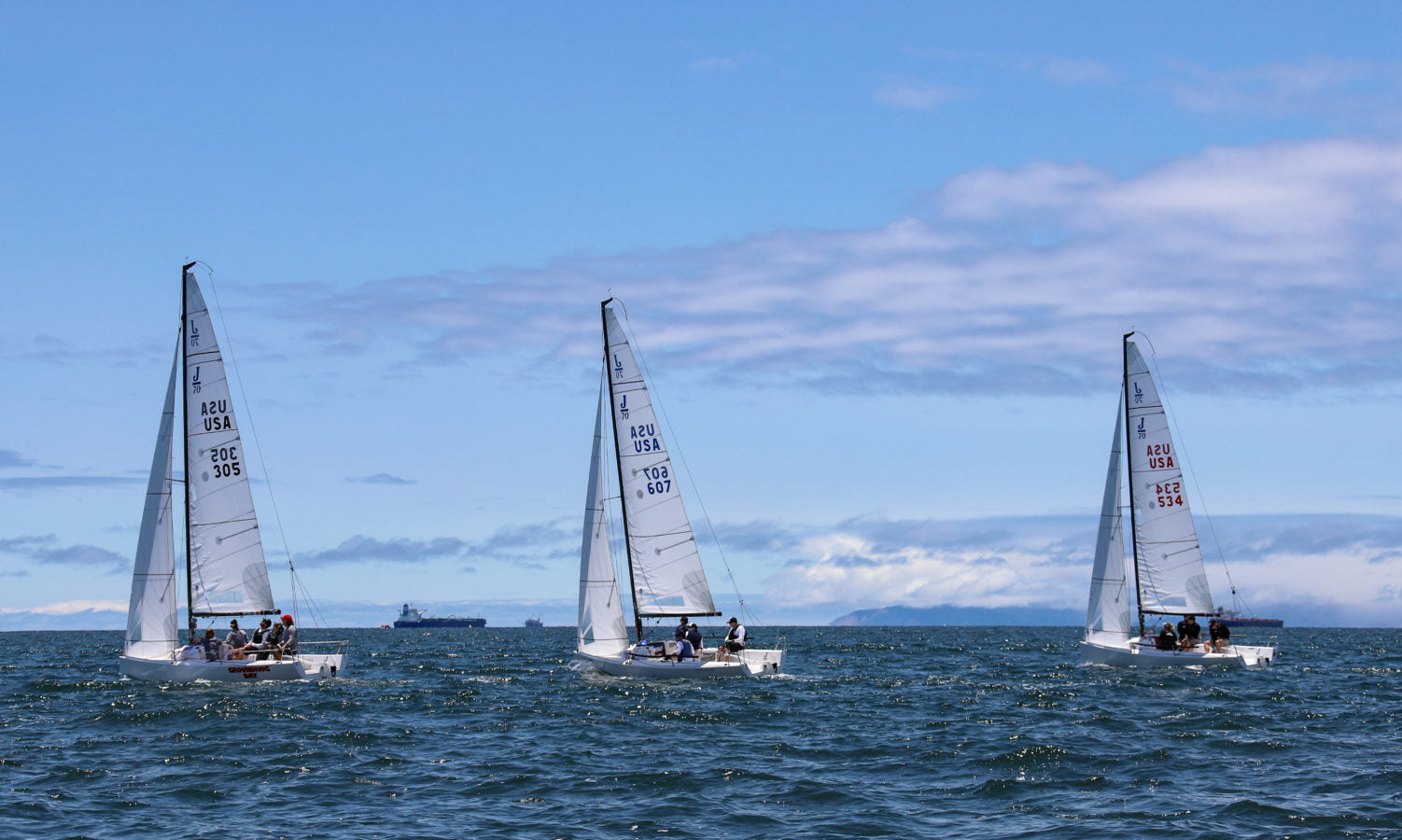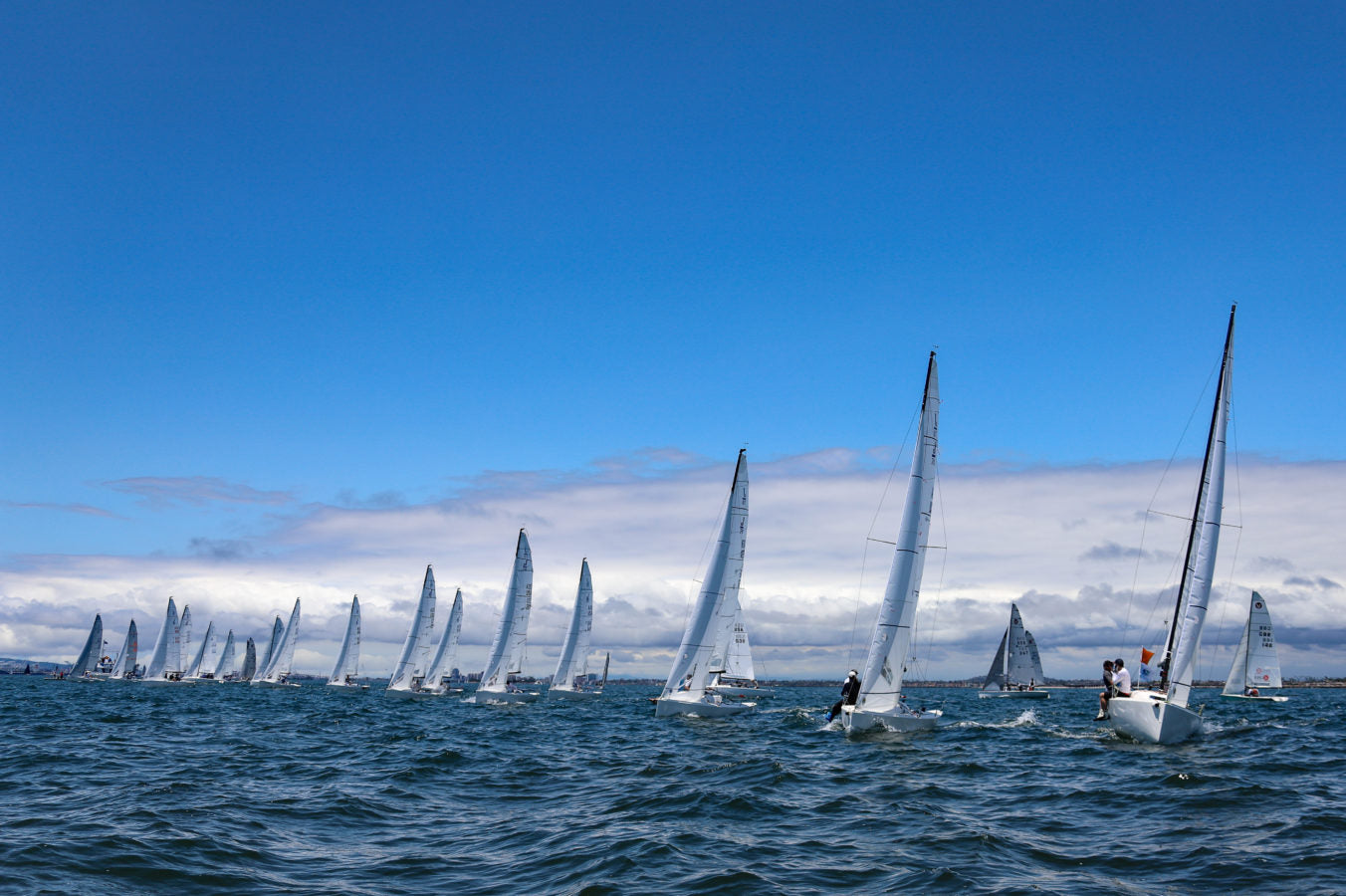J/70 UPWIND TRIM TIPS
J/70 UPWIND TRIM TIPS
Finding Your Groove In Building Pressure

North Sails expert Zeke Horowitz shares important J/70 upwind sail trim takeaways from his recent experience in California, USA at Long Beach Race Week. Zeke sailed with Jeff Janov on Minor Threat, and they tied for first place with just 18 points in the seven race regatta.
Less than 10 Knots
When the breeze is under 10 knots and you are looking for power, be sure to get up to speed by “pressing” on the jib before trying to grab any height. In these underpowered conditions, height comes from achieving flow over the keel, NOT from simply trying to point the boat higher. By pressing on the jib, you will power up the sail plan and allow your crew the chance to pressurize the weather rail. This helps achieve max flow on the keel, and your boat will start lifting.
Your leeward jib tell tale should be “nervous” most of the time and you should not sail any higher than tell tales straight back. It’s imperative to get your rig loose enough to help the headstay sag. You can always snug up the headstay by tightening the backstay if you get a little puff. Two turns off the cap shrouds and two turns off the lowers from base is probably about as loose as you should need to go (4-7 kts)*.
Trim the main so you have a nice open leech (tell tales streaming) until you are able to get weight on the rail. Once the weight is up, you can trim the main hard enough to begin seeing stall on the leech tell tales.
*The exact number of turns depends on your rig.

Above 15 Knots
When sailing in over 15 knots and chop, be decisive about your “modes” upwind. Take note of the wave angle on each tack and decide which mode you want to try on each board. For example, if one tack has the wave direction more on the bow, you may want to try a “bow down mode” to keep the speed from crashing when you hit a hard set of waves.
Bow-Down Mode
In “bow-down” mode, try centering the traveler car, pulling the backstay hard enough to just see inversion wrinkles in the middle of the main, and pulling the vang hard enough to see some inversion wrinkles down low. Play the mainsheet a lot to maintain a steady heel angle, with the jib tell tales straight back or the inside one just lifting. The name of the game here is speed, so set a target speed number and don’t let the bow come up until you’ve hit your target.

Higher Mode With Flat Boat
If the waves are more side-to, you can try a higher mode with a flatter boat. Bring the traveler car 1/3 – 1/2 of the way up. You’ll have the backstay tight, but not so tight that you see any inversion, and the vang will also be snug, but not so tight that you get low main inversion. The mainsheet will be eased a little more overall to help keep the boat flat. In this mode, you keep some power in the main with the higher traveler and fuller main, but you’ve got more twist in the leech which spills some power to keep you flatter.
It’s imperative to get the boat up to speed before trying to point, but with this mode, you can achieve more keel flow by keeping the boat flatter. At times, the driver may feel a touch of lee helm that they must push against, until the main trimmer ‘catches up’ by bringing the mainsheet in slightly. This mode is not as ‘forgiving’ but it can be lethal when the boat is up to speed in open water.
*With this second mode, you might need to try a little less inhauler to help keep the headstay straighter, since your backstay and main sheet are not trimmed quite as hard.
Learn more about North J/70 products




























